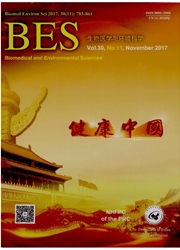

 中文摘要:
中文摘要:
在心肺的复活(CPR ) 以后在 48 h 期间调查心脏的功能和心肌的灌注的目的,对测试进一步心肌叹为观止并且在 CPR 以后为长期的幸存寻求指示物。在未经治疗的室的纤维性颤动的 4 min 以后的方法,十五头 anesthetized 猪在基线和 2 h 被学习,在自发的循环(ROSC ) 的恢复以后的 4 h, 24 h,和 48 h。血液动力学的数据, echocardiography 和门单人赛光子排放计算了断层摄影术心肌的灌注图象被执行。结果平均数动脉的压力(地图) ,冠的灌注压力(CPP ) 和心脏的 troponin (CTNI ) 我在 ROSC 以后在 4 h 显示出最终的幸存动物和非幸存动物之间的重要差别(109.2
 英文摘要:
英文摘要:
Objective To investigate cardiac function and myocardial perfusion during 48 h after cardiopulmonary resuscitation (CPR), further to test myocardial stunning and seek indicators for long‐term survival after CPR. Methods After 4 min of untreated ventricular fibrillation, fifteen anesthetized pigs were studied at baseline and 2 h, 4 h, 24 h, and 48 h after restoration of spontaneous circulation (ROSC). Hemodynamic data, echocardiography and gated‐single photon emission computed tomography myocardial perfusion images were carried out. Results Mean arterial pressure (MAP), coronary perfusion pressure (CPP) and cardiac troponin I (CTNI) showed significant differences between eventual survival animals and non‐survival animals at 4 h after ROSC (109.2±10.7 mmHg vs. 94.8±12.3 mmHg, P=0.048; 100.8±6.9 mmHg vs. 84.4±12.6 mmHg, P=0.011; 1.60±0.13 ug/L vs. 1.75±0.10 ug/L, P=0.046). Mitral valve early‐to‐late diastolic peak velocity ratio, mitral valve deceleration time recovered 24 h; ejection faction and the summed rest score recovered 48 h after ROSC. Conclusion Cardiac systolic and early active relaxation dysfunctions were reversible within survival animals; cardiac stunning might be potentially adaptive and protective after CPR. The recovery of MAP, CPP, and CTNI could be the indicators for long‐term survival after CPR.
 同期刊论文项目
同期刊论文项目
 同项目期刊论文
同项目期刊论文
 Effect of continuous compressions and 30:2 cardiopulmonary resuscitation on global ventilation/perfu
Effect of continuous compressions and 30:2 cardiopulmonary resuscitation on global ventilation/perfu Mild Hypothermia Attenuates Mitochondrial Oxidative Stress by Protecting Respiratory Enzymes and Upr
Mild Hypothermia Attenuates Mitochondrial Oxidative Stress by Protecting Respiratory Enzymes and Upr Cerebrospinal fluid biochemistry reflects effects of therapeutic hypothermia after cardiac arrest in
Cerebrospinal fluid biochemistry reflects effects of therapeutic hypothermia after cardiac arrest in Effect of rescue breathing during cardiopulmonary resuscitation on lung function after restoration o
Effect of rescue breathing during cardiopulmonary resuscitation on lung function after restoration o Load-distributing band improves ventilation and hemodynamics during resuscitation in a porcine model
Load-distributing band improves ventilation and hemodynamics during resuscitation in a porcine model 期刊信息
期刊信息
